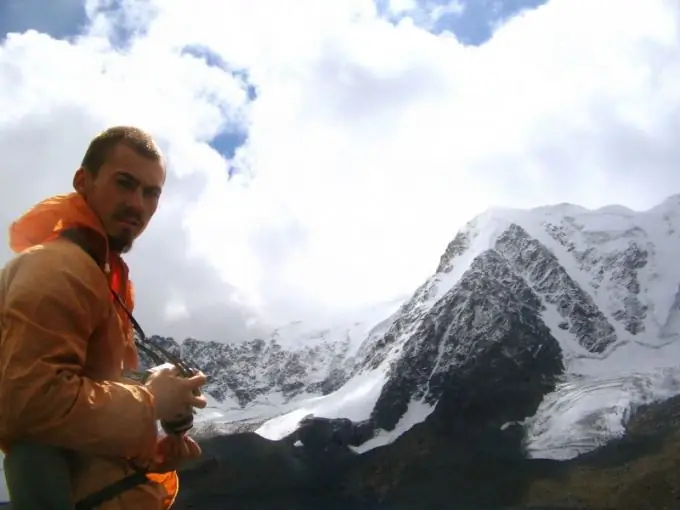When photographing mountain landscapes, there are a number of nuances to consider that play an important role in creating images that can convey all the beauty that the photographer sees through the camera lens. Even a non-professional technician can take good photos if you know some subtleties.

Instructions
Step 1
Before heading to the mountains, choose a camera that you will take with you. It doesn't have to be a cumbersome device, but a "soap dish", even the most "fancy" one, will not work either. The camera should not hinder your movements in mountainous areas, while ensuring the ability to fully work. Since in the mountains, choosing a suitable angle, it is not always possible to move freely from one point to another, the camera must be capable of multiple optical zooming. Without the zoom function, you will be severely limited in your ability to capture whatever you find interesting. Alternatively, you can use a compact "ultrazoom".
Step 2
One of the main factors influencing the creation of high-quality photographs is the correct determination of the exposure. This is especially true when shooting in the mountains. The fact is that the mountains are very contrasting, especially in the bright light of the sun, and if snow, the sky or a mountain river gets into the lens, the exposure meter overestimates the readings, and the frame gets too dark. Therefore, expose on a medium-bright subject such as a rocky area or grassy slope. However, when photographing sunsets and sunrises, the exposure should be determined by an area of the sky 20-25 ° above the sun. Another option is to meter the exposure with the setting (or rising) sun in the frame, and when shooting, simply increase it by 3-4 times.
Step 3
Since photographing in the mountains is most often done in gorges where trails pass, it is very problematic to cover the entire panorama without using short-focus wide-angle lenses. Keep in mind, however, that an ultra wide angle lens will significantly remove the background, thereby distorting the space. So, if the lens is at an angle to the horizontal, the mountain ranges will appear smaller and lower than they really are. Long-focus lenses, on the contrary, unnecessarily bring the background closer, but at the same time they are useful when shooting distant peaks, allowing you to combine several objects at different distances in the frame.






